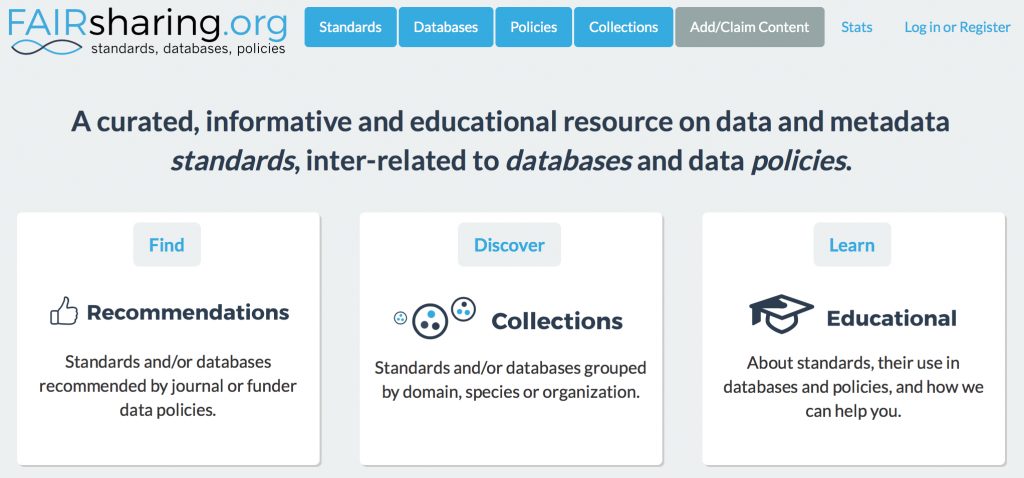In a previous post, I looked at the Findability of FAIR data in common chemistry journals. Here I move on to the next letter, the A = Accessible.
Posts Tagged ‘Information’
The “Accessible” in FAIR (data).
Thursday, April 18th, 2019Tags:Academic publishing, automatic processing, Data management, Digital Object Identifier, EIDR, FAIR data, Findability, Identifiers, Information, Information architecture, Information science, Knowledge, Knowledge representation, metadata, mining, Open Archives Initiative, RDF, Records management, representative, standardized communication protocol, Technical communication, Technology/Internet, Web design, Written communication, XML
Posted in Chemical IT | No Comments »
A search of some major chemistry publishers for FAIR data records.
Friday, April 12th, 2019In recent years, findable data has become ever more important (the F in FAIR). Here I test that F using the DataCite search service.
Tags:Academic publishing, DataCite, Digital Object Identifier, Digital technology, Elsevier, Findability, Identifiers, Information, Information architecture, Information science, Knowledge, Knowledge representation, search service, Web design
Posted in Chemical IT | 1 Comment »
Questions about the (metadata) components of a scientific article.
Monday, April 8th, 2019The conventional procedures for reporting analysis or new results in science is to compose an “article”, augment that perhaps with “supporting information” or “SI”, submit to a journal which undertakes peer review, with revision as necessary for acceptance and finally publication. If errors in the original are later identified, a separate corrigendum can be submitted to the same journal, although this is relatively rare. Any new information which appears post-publication is then considered for a new article, and the cycle continues. Here I consider the possibilities for variations in this sequence of events.
Tags:Academic publishing, American Chemical Society, author, Business intelligence, Company: DataCite, CrossRef, data, Data management, DataCite, editor, EIDR, Information, Information science, JSON, Knowledge representation, Metadata repository, Records management, Technology/Internet, The Metadata Company
Posted in Chemical IT | No Comments »
“Richer metadata makes content more useful”
Saturday, February 16th, 2019The title of this post comes from the site www.crossref.org/members/prep/ Here you can explore how your favourite publisher of scientific articles exposes metadata for their journal.
Tags:Aaron Swartz, Academic publishing, API, Business intelligence, CrossRef, data, Data management, Elsevier, favourite publisher, Identifiers, Information, Information science, Knowledge, Knowledge representation, metadata, mining, ORCiD, PDF, Pre-exposure prophylaxis, Publishing, Publishing Requirements for Industry Standard Metadata, Records management, Research Object, Scholarly communication, Scientific literature, search engine, social media, Technical communication, Technology/Internet, text mining, Written communication, XML
Posted in Interesting chemistry | 1 Comment »
Re-inventing the anatomy of a research article.
Saturday, December 29th, 2018The traditional structure of the research article has been honed and perfected for over 350 years by its custodians, the publishers of scientific journals. Nowadays, for some journals at least, it might be viewed as much as a profit centre as the perfected mechanism for scientific communication. Here I take a look at the components of such articles to try to envisage its future, with the focus on molecules and chemistry.
Tags:Academic publishing, Acrobat, Articles, chemical discoveries, data, Data management, ELN, Information, Molecules, Narrative, PDF, Publishing, Research, Scholarly communication, Science, Scientific Journal, Scientific method, Technical communication, Technology/Internet, Web browser
Posted in Chemical IT | No Comments »
Harnessing FAIR data: A suggested useful persistent identifier (PID) for quantum chemical calculations.
Tuesday, August 7th, 2018Harnessing FAIR data is an event being held in London on September 3rd; no doubt all the speakers will espouse its virtues and speculate about how to realize its potential.♥ Admirable aspirations indeed. Capturing hearts and minds also needs lots of real life applications! Whilst assembling a forthcoming post on this blog, I realized I might have one nice application which also pushes the envelope a bit further, in a manner that I describe below.
Tags:Academic publishing, chemical context, Code, data, DataCite, energy, free energy activation barrier, Identifiers, Information, ISO/IEC 11179, ORCiD, quantum chemical calculations, real life applications, Technical communication
Posted in Interesting chemistry | 9 Comments »
Examples please of FAIR (data); good and bad.
Sunday, May 6th, 2018The site fairsharing.org is a repository of information about FAIR (Findable, Accessible, Interoperable and Reusable) objects such as research data.

Tags:above site, chemical components, Findability, Human behavior, Information, Information architecture, Information science, Institutional repository, journal data editor, Knowledge, Knowledge representation, Open access, Open access in Australia, Oscar, PDF, recognition software, Technology/Internet, Web design
Posted in Interesting chemistry | 2 Comments »
FAIR data ⇌ Raw data.
Thursday, December 7th, 2017FAIR data is increasingly accepted as a description of what research data should aspire to; Findable, Accessible, Inter-operable and Re-usable, with Context added by rich metadata (and also that it should be Open). But there are two sides to data, one of which is the raw data emerging from say an instrument or software simulations and the other in which some kind of model is applied to produce semi- or even fully processed/interpreted data. Here I illustrate a new example of how both kinds of data can be made to co-exist.
Tags:computing, Context, data, Data management, Information, Knowledge, Raw data, software simulations, Technology/Internet
Posted in Chemical IT, crystal_structure_mining | No Comments »
PIDapalooza 2018: the open festival for persistent identifiers.
Tuesday, November 14th, 2017PIDapalooza is a new forum concerned with discussing all things persistent, hence PID. You might wonder what possible interest a chemist might have in such an apparently arcane subject, but think of it in terms of how to find the proverbial needle in a haystack in a time when needles might look all very similar. Even needles need descriptions, they are not all alike and PIDs are a way of providing high quality information (metadata) about a digital object.
Tags:chemist, computing, Information, Information science, Knowledge representation, librarian, Needle, PID
Posted in Chemical IT | No Comments »